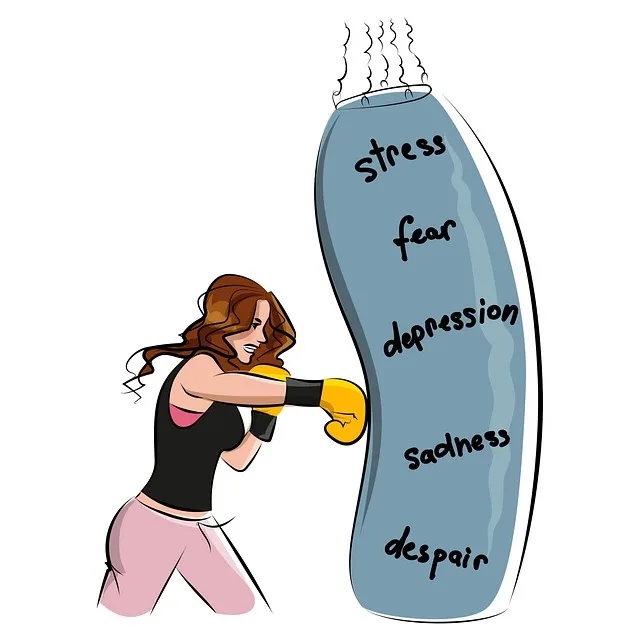Castle Rock Kaiser Permanente (KRKP) prioritizes mental wellness through comprehensive risk assessment and harm minimization. By evaluating individual vulnerabilities, environmental factors, and unique risk characteristics, KRKP develops personalized strategies. Their dedicated behavioral health number offers confidential access to guidance on emotional well-being, while their Crisis Intervention Guidance empowers patients with self-care routines and journaling exercises. Through holistic risk assessment, proactive stress management, and continuous improvement, KRKP ensures targeted interventions and improved patient outcomes in their behavioral health services.
Risk assessment and harm minimization planning are essential components of providing safe, effective care in behavioral health settings. This article guides professionals through a comprehensive approach, from understanding foundational concepts like risk assessment to practical strategies for implementing continuous improvement. We explore key areas including evaluating risks in behavioral health, developing harm minimization plans, and leveraging resources like the Castle Rock Kaiser Permanente Behavioral Health Number to enhance access to services.
- Understanding Risk Assessment: A Foundation for Harm Minimization
- The Castle Rock Kaiser Permanente Behavioral Health Number: Unlocking Access to Services
- Identifying and Evaluating Risks in Behavioral Health Settings
- Developing a Comprehensive Harm Minimization Plan
- Implementing Strategies for Continuous Improvement and Monitoring
Understanding Risk Assessment: A Foundation for Harm Minimization

Understanding Risk assessment forms the bedrock upon which effective harm minimization planning rests. It involves meticulously evaluating potential risks and their likely impact, enabling professionals like those at Castle Rock Kaiser Permanente behavioral health to develop tailored strategies aimed at preventing or mitigating harm. By analyzing various factors, including individual vulnerabilities, environmental influences, and the nature of the risk itself, they can create a robust framework for safeguarding mental wellness.
This proactive approach is particularly crucial in behavioral health settings where addressing issues like anxiety relief and confidence boosting often involves navigating complex challenges. Mental Wellness Coaching Programs Development plays a pivotal role here by providing tools and resources to empower individuals. By identifying risks early on, professionals can implement targeted interventions, ensuring that individuals receive the necessary support for their specific needs, ultimately fostering a more secure and healthy environment for all.
The Castle Rock Kaiser Permanente Behavioral Health Number: Unlocking Access to Services

The Castle Rock Kaiser Permanente Behavioral Health Number serves as a gateway to essential services for those prioritizing their emotional well-being. This dedicated number facilitates access to specialized care, offering a confidential space for individuals seeking support for various mental health concerns. By dialling this number, patients can connect with professionals who provide guidance on effective Emotional Well-being Promotion Techniques.
Through this accessible entry point, Kaiser Permanente ensures that the community in Castle Rock has easy access to resources for managing and improving their mental wellness. Whether one is interested in exploring Mental Wellness Journaling Exercise Guidance or delving into Mind Over Matter Principles, the dedicated team can offer tailored support and direction, contributing to a more resilient and balanced lifestyle.
Identifying and Evaluating Risks in Behavioral Health Settings

Identifying and evaluating risks is a cornerstone of effective harm minimization planning in behavioral health settings, such as those provided by Castle Rock Kaiser Permanente. This process involves meticulously scrutinizing various factors that could potentially lead to adverse outcomes for patients. By adopting a comprehensive approach, the team at Castle Rock Kaiser Permanente behavioral health aims to ensure the safety and well-being of every individual receiving care.
The first step is to assess the unique environment and population served, considering the diverse needs and challenges present. This includes recognizing immediate dangers, like self-harm or violence, as well as long-term risks associated with specific conditions. For instance, patients experiencing severe depression might require different risk interventions compared to those struggling with substance abuse. The Crisis Intervention Guidance offered by Castle Rock Kaiser Permanente plays a vital role in navigating these complexities, ensuring that interventions are tailored to individual needs. Additionally, promoting Self-Care Routine Development for Better Mental Health and providing Mental Wellness Journaling Exercise Guidance can empower patients to actively participate in their healing process, reducing overall risks.
Developing a Comprehensive Harm Minimization Plan

In developing a comprehensive harm minimization plan, mental health professionals at Castle Rock Kaiser Permanente (KRKP) behavioral health number should prioritize holistic risk assessment strategies. This involves meticulously evaluating each patient’s unique psychological profile, environmental factors, and potential triggers for distress or harmful behaviors. By integrating data from clinical evaluations, patient self-reporting, and feedback mechanisms, KRKP can construct a nuanced understanding of individual risks, enabling the implementation of targeted interventions.
A robust harm minimization plan should encompass tailored risk management strategies, including proactive stress management techniques for both patients and staff. This might involve training in mindfulness, resilience-building exercises, and crisis intervention protocols. By fostering an environment that promotes emotional well-being and equips individuals with coping mechanisms, KRKP aims to mitigate risks, enhance patient outcomes, and ensure the safety of all stakeholders within its behavioral health services.
Implementing Strategies for Continuous Improvement and Monitoring

Implementing strategies for continuous improvement and monitoring is a cornerstone of effective risk assessment and harm minimization planning within behavioral health services, such as those provided by Castle Rock Kaiser Permanente. This involves actively seeking feedback from both patients and staff through regular evaluations and quality assurance measures. By embracing a culture of continuous learning, organizations can identify areas where Compassion Cultivation Practices and Mood Management techniques can be enhanced, ensuring that these evidence-based strategies remain relevant and impactful.
Effective communication strategies play a vital role in this process. Open lines of dialogue encourage patients to share their experiences and concerns, while fostering an environment of trust and collaboration among staff. Regular reviews and data analysis allow for informed decision-making, enabling the implementation of targeted interventions that address emerging trends and challenges. This dynamic approach ensures that harm minimization plans remain adaptable and responsive to the evolving needs of both patients and the healthcare delivery system.
Risk assessment and harm minimization planning are integral components of providing safe, effective, and accessible behavioral health services. By understanding risk assessment as a foundational step and leveraging resources like the Castle Rock Kaiser Permanente Behavioral Health Number to enhance access, facilities can proactively identify and mitigate risks. Comprehensive harm minimization plans, coupled with continuous improvement strategies, ensure that care remains not only evidence-based but also responsive to evolving challenges. This holistic approach fosters an environment where patients receive quality care while risks are minimized, ultimately promoting better outcomes and enhanced patient safety.






